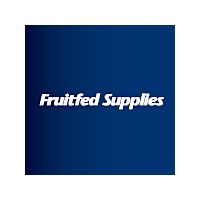
Cover crops improve growing environments in orchards and vineyards
Broadly speaking, a cover crop is any annual, biennial or perennial plant grown to improve soil conditions. The cover crop could be just one plant species grown alone or multiple plant species grown together.
Where used appropriately, cover crops can improve the growing environment by reducing erosion, increasing water retention and nutrient availability, suppressing weeds, increasing soil organic matter, reducing pest and disease risk, and playing a role in the sequestration of atmospheric carbon.
Certain cover crop blends can help reduce the vigour of the main crop, attract beneficial insects, and improve the trafficability and presentation of vineyard or orchard rows.
PGG Wrightson Turf, a trading division of PGG Wrightson Seeds Ltd, offers the Dionysus range of cover crops through Fruitfed Supplies to meet the increasing demand from growers for alternative cover crop options to bare earth or natural vegetation. The Dionysus range has been developed at the Kimihia Research Centre in Lincoln which is PGG Wrightson Seeds’ primary research and development site.
In spring 2000, four trial sites were sown on vineyards in Nelson, Blenheim and Canterbury. An autumn trial was also established at a trial site in Tasmania. Further investigative work has been carried out in the following 20 years to assess the suitability of different plant species for use as cover crops, assess different cover crop management techniques and evaluate the effects on the vines or trees overhead. More recently, a new under-vine trial with a native grass species in Hastings commenced within the Dionysus programme.
A range of Lo-Gro blends have been in use in orchards and vineyards around the country for some time. Designed with low maintenance and nutrient competitiveness in mind, these low and slow-growing blends use grass species also suitable for golf fairways, sports stadiums and home lawns.
A new shade-tolerant Lo-Gro Kiwi blend is now available. Containing perennial ryegrass, creeping red fescue, chewings fescue, hard fescue and browntop, this blend is designed to offer greater persistence in low-light or shaded situations as is typical under a kiwifruit canopy.
Hastings Fruitfed Supplies Technical Representative, Andrew McNeil has worked alongside the company’s seed specialists prior to the formation of PGG Wrightson in 2006.
“Many clients around Hawke’s Bay use Dionysus Lo-Gro in their vineyards and orchards,” Andrew says. “After further development work finding the most effective blend, the new Lo-Gro Kiwi blend is now established in a client’s kiwifruit orchard. It’s performing as well as we
all expected.”
Andrew’s client, Al Gordon, commented that he is very happy with how the Lo-Gro Kiwi blend has established. “It copes very well with orchard traffic on it.”
Orchardists and viticulturists can opt for autumn or spring sowing of the cover crops, with advantages and disadvantages of each, depending on the situation, season and which Dionysus blend is being sown. Preparation for autumn sowing commences in February while growers looking at spring sowing should start preparing in June or July.
Jason Weller, National Sales and Marketing Manager for PGG Wrightson Turf, notes that Dionysus blends can be custom blended for virtually any horticultural situation. “We can also supply untreated and organic seed options which meet the needs of growers working to BioGro organic certification requirements. We have all the supporting documentation for auditing purposes and look forward to discussing the options to suit your orchard or vineyard.”

